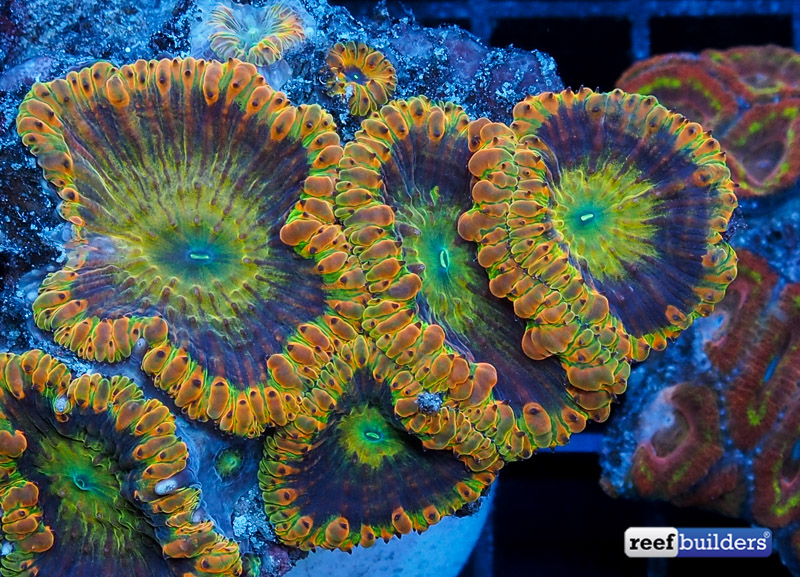I saved one really, really nice Blastomussa from infection using Reef Primer and it’s gotten me really curious. Can Reef Primer really be used to save some of these corals that are notorious at coming down with aggressive bacterial infections?
If you’re a casual aquarist or weekend hobbyist, you may not be aware of the attrition that happens to some types of corals well before they get to you, or your local fish store. But the professional coral dealers who handle lots of corals and lots of different types are all too keen that some groups of corals are prone to infections, and can be overtaken by devastating virulent bacterial infections in a matter of days.
Sometimes it’s corals from a certain region, sometimes it’s particular groups of corals that come down with ‘coral funk’, but there’s definitely some types of coral infections that kill whole coral colonies and we don’t have any tools to deal with them. The various coral dips available on the market today, are the most basic disinfectants of lemon and pine oil extract which pretty much only serve to remove macroscopic parasites from the surface of our beloved corals.

Reef Primer is different, but even we were skeptical that this product could do anything more than Two Little Fishies’ Revive or CoralRx. Whereas all other coral dips rely on botanical extract to essentially shock parasites into coming off the coral host, Reef Primer is actually a special blend of potassium salts that burn off these pests and parasites. The documentation for Reef Primer even states that it can stop recession of different kinds but we had to see it to believe it.
So about two weeks ago, this one stunning Blastomussa vivida from Indonesia began showing the type of infection spread which nearly always spells the demise for this type of coral. On a lark we tried a dipping this coral in a solution of Reef Primer, because having seen this type of infection in Indonesian Blastos we were certain that the coral would be nothing but skeleton in a few days if we did nothing at all.

We dipped the coral, it looked like crap for a couple days, so we set it back in the shaded corner from whence it came and fully expected to be pulling out a coral skeleton the next time we came around to it. So low and behold, yesterday we examined this specimen of Blastomussa vivida and discovered that the infection was stopped in its tracks, with a good week’s worth of algae growth on the tissue that was exposed by the infection before the dip, and the remaining polyp tissue looked well inflated, puffy and healthy.
Now to be clear, this is a sample size of precisely one successful story, and there’s no assurance that the Reef Primer is the principal cause of stopping this coral’s infection. But between you and I, we’ll be keeping some Reef Primer on hand for the next time a really fancy coral decides to up and come down with a nasty bacterial infection, and we’ll be sure to report back on our continued trials with this product in the future.




